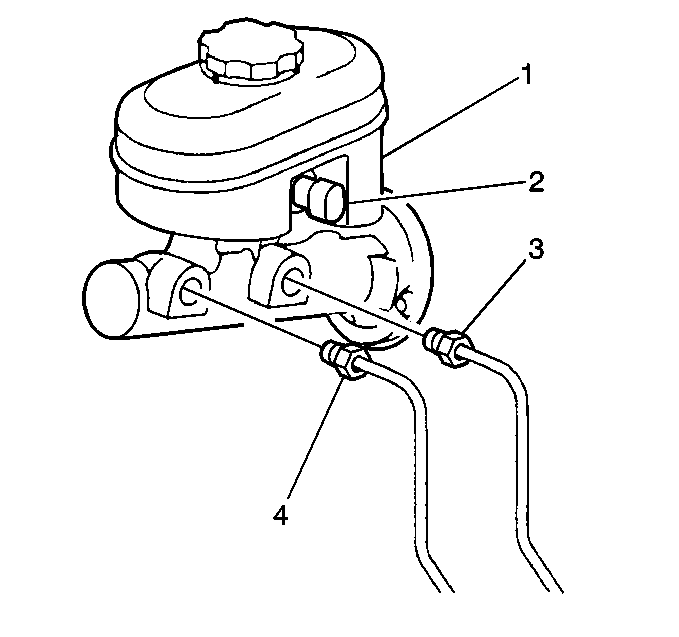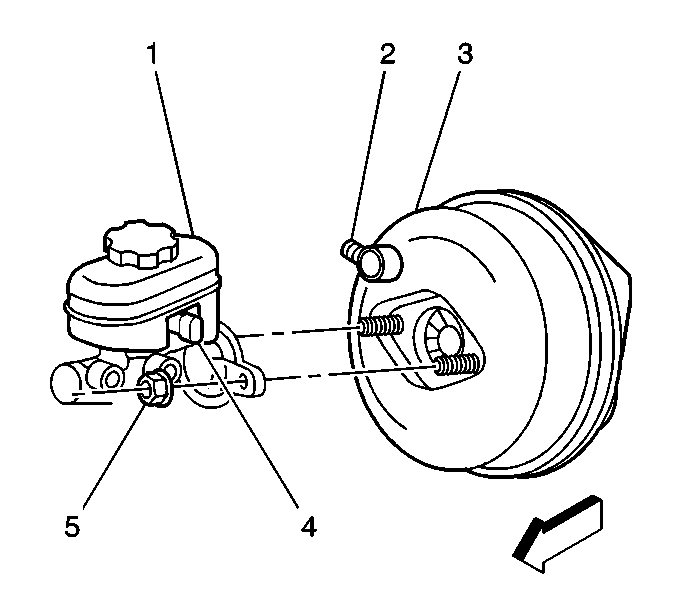Removal Procedure
- Disconnect the electrical connector from the fluid level switch (2).
- Remove the brake pipe tube nuts (3,4) from the master cylinder assembly.
- Plug the open brake pipes (3,4) in order to prevent brake fluid loss and contamination.
- Remove the master cylinder mounting nuts (5).
- Remove the master cylinder (1) from the booster (3).


Installation Procedure
- Install the master cylinder (1) to the power booster assembly (3).
- Install the brake pipe tube nuts (3,4) to the master cylinder assembly.
- Connect the electrical connector to the fluid level switch (2).
- Fill the master cylinder to the proper level using clean brake fluid. Refer to Master Cylinder Reservoir Filling .
- Bleed the hydraulic system. Refer to Hydraulic Brake System Bleeding .

Notice: Use the correct fastener in the correct location. Replacement fasteners must be the correct part number for that application. Fasteners requiring replacement or fasteners requiring the use of thread locking compound or sealant are identified in the service procedure. Do not use paints, lubricants, or corrosion inhibitors on fasteners or fastener joint surfaces unless specified. These coatings affect fastener torque and joint clamping force and may damage the fastener. Use the correct tightening sequence and specifications when installing fasteners in order to avoid damage to parts and systems.
Tighten
Tighten the master cylinder assembly mounting nuts (5) to 27 N·m
(20 lb ft).

Tighten
Tighten the brake pipe tube nuts to 23 N·m (17 lb ft).
Caution: Brake fluid may be irritating to the skin or the eyes, or may cause
nausea, vomiting, or diarrhea if swallowed. In case of contact or swallowing
take the following actions:
• Eye contact - rinse thoroughly with water • Skin contact - wash with soap and water • If swallowed - Contact a physician immediately. Give
two glasses of water and induce vomiting by sticking fingers down the throat.
Notice: Avoid spilling brake fluid on any of the vehicle's painted surfaces, wiring, cables, or electric connectors. Brake fluid will damage the paint and the electrical connections. If any fluid is spilled on the vehicle, flush the area to lessen the damage.
